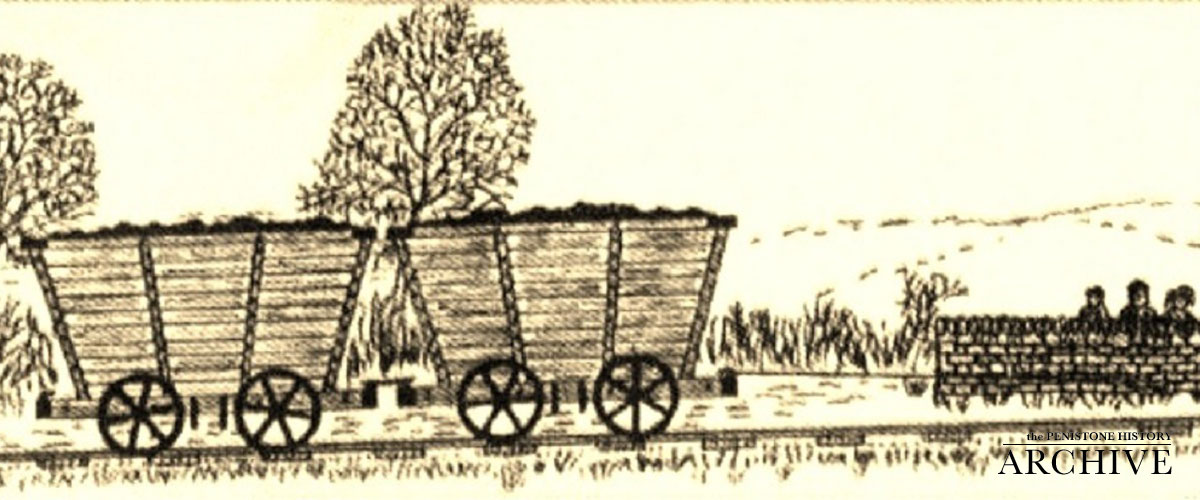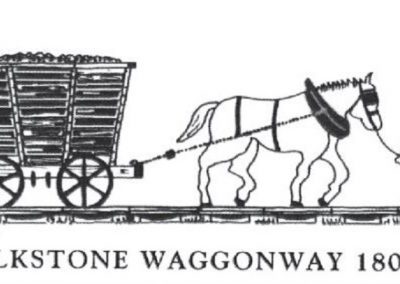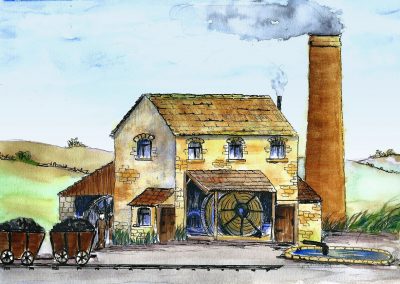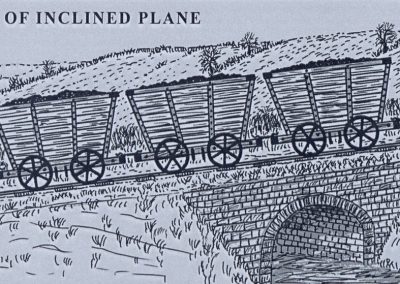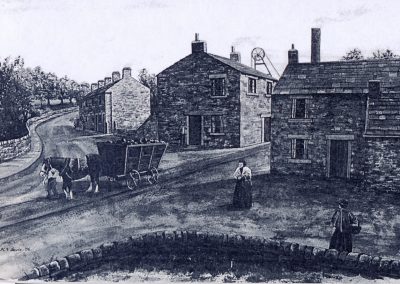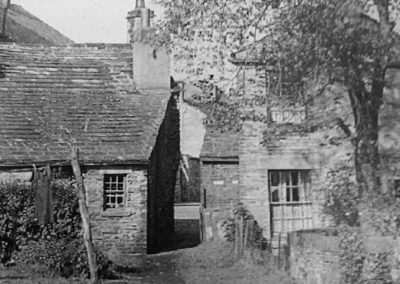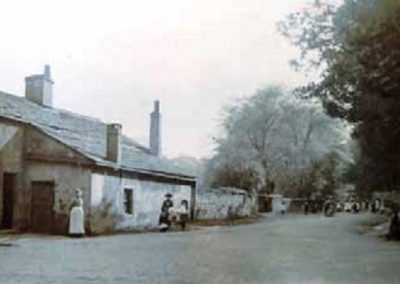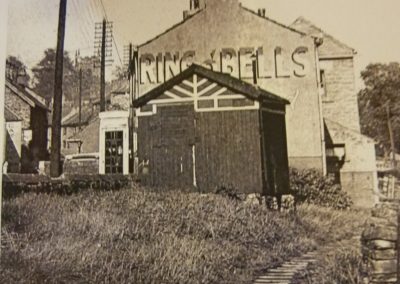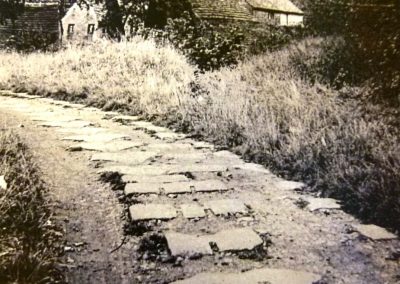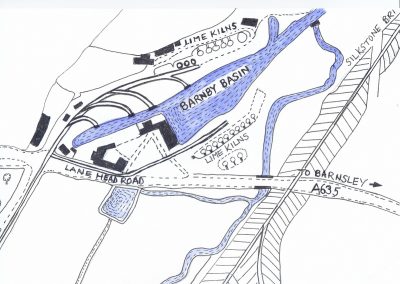(Scroll down for photos)
Silkstone Waggonway
For much of the nineteenth and twentieth centuries, South Yorkshire was synonymous with the coal industry. The images that generally come to mind are of towering pit head machinery, mountainous spoil heaps and vast railway sidings.
If we go back to the early 1800s when coal extraction was in its infancy and when more primitive techniques of mining and transportation were used, and the industry had less visual impact on the landscape.
Beneath our feet is the ‘Silkstone seam’, one of the most famous deposits of coal in South Yorkshire. Coal from the Silkstone seam was desirable for its quality to give off considerable heat while leaving little ash after burning. Most villagers – young and old, men and women, boys and girls – were involved in mining coal from the Silkstone seam. It shaped the economic and social life of the area, as well as the physical landscape.
Our record of the Silkstone Waggonway starts in the village of Silkstone Common which is on a ridge and descends to the neighbouring village of Silkstone in the valley below.
Black Gold
Most coal was formed between about 360 and 300 million years ago when dense swampy forests covered the area. Essentially coal is an accumulation of soil and decayed vegetation that was slowly buried and compressed then gradually solidified into rock under the forces of pressure and heat.
Coal is found in layers called ‘beds’ or ‘seams’. Some coal seams are found near the surface, others are deep underground. In the South Yorkshire Coalfield (an area between Barnsley, Doncaster and Sheffield) the Silkstone seam is actually the deepest seam of any size.
However, due to the lie of the land, the seam comes very close to the surface in places and therefore was relatively easy to access. Nabs Wood is located nearby and was therefore one of the sites where mining took place. The coal needed to be taken up to the top of Silkstone Common, over the ridge, down the other side to Silkstone, then along the valley bottom to Barnby canal basin.
While horses could haul heavy waggons on the flat, they could not manage the gradients up and down the hill. The solution was what is now known as “The Silkstone Waggonway”. You can no longer follow the exact route of the Waggonway due to re-development.
Silkstone Common
Waggons were loaded with coal at Moorend and Husker Pit shafts and brought by horses along Waggonway branches to the valley bottom (near the cottages below the railway bridge neither of which had been built then).
The main line of the Waggonway then ran from the junction of these two branches up a steady incline to the top of Silkstone Common. The single rail track went in a straight line up the hillside. A steam engine was located at Black Horse Farm at the top and known as “Black Horse Engine”. It powered a winch that hauled the waggons of coal up on a pulley system of ropes. At this point, the waggons would have been nearing the final part of their steam-powered journey up the hill, the coal waggon was unhitched from the steam-driven winch and horse power took over. At the top of the hill was a tunnel, known as Black Horse Tunnel. It was about 100 yards long and went under the road. It may have been built to reduce the final gradient over the top of the hill, or it may have been a means for the coal waggons to avoid having to cross the road. The tunnel still lies beneath the hill but is now blocked off.
The coal now needed to be transported down into the bottom of the next valley and was put into a holding area. On this side of the hill, there was also a rope pulley system but this one was powered by gravity rather than steam engine, as on the other side. It was known as a self-acting incline plane. There was a double rail so that as eight full waggons descended, empty ones were pulled back to the top on the opposite rail using a four inch rope system. A brake drum system was installed to avoid accidents. On reaching level ground horses were waiting to pull the loaded waggons down to Silkstone Cross on their way to the two and a half mile route to their destination.
The Clarke Family
Nearby is a manor house called Noblethorpe Hall within an area of parkland called Noblethorpe Park. This was the largest mansion in the village and home of the Clarke family who owned most of the mines in this area.
In 1792 Jonas Clarke, a solicitor by trade, had bought Noblethorpe Hall farm in Silkstone. He started mining for coal on his land – his first mines were Noblethorpe Warren and Noblethorpe 2. He soon found out about plans to construct a new canal to exploit the coal reserves in the area so he started to buy up other farms with the view of developing his coal mining operations and capitalising on this opportunity of a new means of transportation.
On the death of Jonas in 1822 his son Robert C. Clarke took over. In about 1831 he laid a private branch of the Waggonway into the Dove Valley to the south where he opened two new pits at Moorend and House Carr (Huskar).
From the profits of these activities, the original building at Noblethorpe was upgraded to a mansion in 1838. The Clarke family was the first to engage in industrial-scale coal mining. However, other mining entrepreneurs soon followed the trend and sank shafts or opened drift mines. The coal industry was flourishing; it was a ‘black gold rush’. The Clarke family’s expanding mining operations, and those of the other landowners, offered the opportunity for employment at a time when making a living was difficult.
People came from outside the area – records show they came from Leeds, Scarborough, Durham, Lincoln and even London – to work in the mines and associated industries. Because of ‘black gold’, as coal was known, the Silkstone area was booming.
In 1821 the population of Silkstone was just 807. By the 1861 Census it was 1,054 and by 1871 it was 1,291. Consider that this expansion was happening in all the villages around and you will realise that this was a time of great economic and social change.
Most family members – men, women and children – were being employed in the mines and associated industries. All employees were obliged to buy all their general supplies in the Clarke’s store, known as the “Tommy Shop,” which was located where the petrol station stands today. From picks and shovels to clogs and candles, from whale oil for lamps to food for families. Wages were spent in the shop and thus the money went straight back into the mine owner’s coffers!
The Clarkes also ran an iron warehouse which supplied rails, Waggonway and underground tramway spares and pit-ropes were available.
From here it’s another two miles to the canal basin at Barnby.
Silkstone
This next part of the Waggonway acted as an artery. In total about twenty coal mines like Moorend owned by the Clarke family and various other independent mine owners used branch lines that converged onto the central Waggonway in the valley bottom.
Jim Ritche from the Roggins Local History Group in Silkstone has been involved in creating a replica waggon that sits proudly at Silkstone Cross. Jim: “This is a full size replica of a Silkstone coal waggon. It sits on cast iron rails and then on stone sleeper blocks on the original route of the Waggonway. Coal waggons were a statute size – they carried 53 hundredweights of coal – and were pulled by horses down the Waggonway. It was a single track but there were a number of passing points – especially on curves in the track – and the length of these passing points indicates that generally two horses would have pulled four waggons.”
If you were to follow the first part of the Waggonway and look out for the stone blocks in the ground to which the rails were attached you would notice that the stones are placed in line corner-to-corner rather than side-to-side. This gave a wider support for the horses’ hooves as they pulled the waggons.
Heritage
Locals are working hard to ensure that the historic Waggonway is preserved. Colin Bower is involved in the Heritage Silkstone project as well as the Roggins Local History Group.
Colin: “The Silkstone Waggonway is one of hundreds in the country that existed in industrial areas in the days before the railways. However, we’re very fortunate here that the Waggonway is still largely in situ despite a considerable amount of building and development in the two villages that it passes through. You can still follow most of the route and see original features including a tunnel, an earthwork, five bridges and hundreds of stone sleeper blocks. We estimate that it’s in the top 11 in the country in terms of the amount of original features still surviving. That makes it rather special. Unfortunately the Waggonway isn’t protected in any way. English Heritage would find it difficult to provide any protection as it is a linear feature without a clear boundary. While the Waggonway is accessible and open to the public it’s also vulnerable”.
The Cross
This area which is now a recreation ground, belongs to Silkstone Parish Council, but in the past was the scene of much industrial activity. It was developed during the first half of the 19th century by the Clarke family of Noblethorpe Hall, with collieries, Coke ovens, Tile works, Gas Works and the Waggonway.
The House No: 1 “The Cross” which stands at the bottom of Cone Lane, had a passage running down between the buildings to take the Waggonway. Before the porch extension was built the adjacent building on the other side had a corner of the wall removed to allow enough width for the waggons. This building was called the “Tommy Shop,” a shop and store owned by the Clarke Family. Goods would be supplied against wages paid to miners and families every fortnight, deductions would be made for rent of their cottages in the village, and purchases at the shop such as candles etc. Record books for the shop and store are in the Clarke Collection, Sheffield Archives.
The village By-pass completed in 1985 altered the road layout and changed the area lying at the end of the High Street called The Cross. In the past this was probably the site of a medieval cross.
The Level Route
The Waggonway runs immediately parallel to Silkstone Beck which is the flattest route along the bottom of the valley. In total it was 8 to 9 miles in length including the various branches. The route crossed the now A628 at Silkstone Cross and passed the replica coal waggon. Even now you can quite clearly see the stone sleeper blocks. It continues along the back of the Ring 0’ Bells Public House, village stocks and along the back of the cottages close to Silkstone Beck, until you come to Pot House Bridge at the bottom of Church Hill.
The stretch from Pot House Bridge to Norcroft Bridge was bought by Silkstone Parish Council in 1987 and is a pleasant walk with views of Fall Wood, Beck and fields.
You will come to the Waggonway pass-bye uncovered and reconstructed by the Roggins Local History Group as part of the Waggonway project with money from a grant from the Rural Target Fund. It has a rebuilt field wall, metal plaque and a short length of track relayed with replica rails on original stone blocks.
Having taken their load of coal to the basin, the waggons did not return empty – other goods were brought in by canal barge and taken back to Silkstone and the villages beyond to supply the mines and associated industries.
This Waggon pass-bye is shown on a map of 1833 in detail and is one of many provided at regular intervals on the route, as the Waggonway was a single track.
Up to the early 19th century there was a corn mill and a water holding pond at Low Mill, which was replaced by an iron furnace. Silkstone Beck was diverted from its course so that the furnace could be built close to the bottom of the hill. The furnace was charged from the top with coke and iron stone, mined from bell pits in the area. A water mill wheel drove the bellows for the air blast. Water was stored in a holding pond diverted from Silkstone Beck.
Barnby Basin and the Lime Kilns
In 1802 the Low Moor Iron Company of Bradford sunk a colliery in the area and built a Waggonway to the newly built canal basin. Just after Furnace Bridge on the right is an old colliery building which may have been a lamp room. The White House beside the main road had an office at the side next to the Waggonway. In the census returns of 1851 for Barnby Basin, Cawthorne, it is recorded a Thomas Hawksworth 66, collector of tolls for the canal company and his wife Martha Hawksworth 68, lived there. Tolls would have been paid by the various colliery owners to transport their coal to the Basin. It is thought that the corner room was the Toll office.
Limestone was brought back to the Basin and burnt along with coke to make lime, for the use of local farmers.
In 1850 a branch line of the Lancashire and Yorkshire Railway was built to take the coal from the collieries in the Silkstone valley. This affected the use of the canal and Waggonway which closed in the 1860’s.
Construction
In the early 1790s coal was being mined across the region but was generally used by industries located close to the mines. There simply wasn’t the infrastructure to distribute it across the region. The Barnsley Canal Company was interested in constructing another canal to access the coal reserves in the Barnby area near Barnsley to meet increasing demand.
In 1792 the canal engineer William Jessop suggested a 14½ mile route from the Aire and Calder Navigation near Wakefield through Barnsley to Barnby.
The first section was completed in 1799 and the Barnsley to Barnby section opened in 1802. The Low Moor Company had a colliery at Barnby Furnace and constructed a half-mile tramway between there and Barnby Basin. The colliery ran into difficulties soon after the canal opened but the company decided to extend the tramway a couple of miles further to Silkstone where there were more collieries. In fact, more collieries opened as the Waggonway was laid. The route to Silkstone opened in 1809 and Barnby Basin was enlarged to cope with the expected trade.
The Waggonway was soon a great success. By 1814 around 85,000 tons of coal from the Silkstone seam was transported along the Waggonway in a 12 month period. This was even before the tramway was extended to Moorend Colliery in 1830.
Clarke’s coal was now connected to the rest of the country through the growing canal network – there are records that it was exported to London. When the standard gauge railway came in 1851, Clarke opened coal yards at King’s Cross in London and his coal was sold in London and other towns along the expanding railway network. We also know that a three-hundredweight piece of beautifully marked ‘Peacock Coal’ from the Huskar Pit was sent to the Great Exhibition of 1851 at Hyde Park in London.
Barnby Basin was an important hub in the transport network and a flourishing hamlet. Little remains today but the interpretation board suggests what it used to look like.
(Information edited from Silkstone A Photographic Journey of Yesteryear and Silkstone Waggonway. Many thanks for the co-operation of Heritage Silkstone.)
(The photos used with this article were donated to Penistone Archive but are from an uncertain or unknown source. We would be grateful for any further information enabling us to add a credit or remove if requested)
4664 Silkstone.Artists impression of Black Horse engine,
4664 Silkstone.Artists impression of Black Horse engine,

